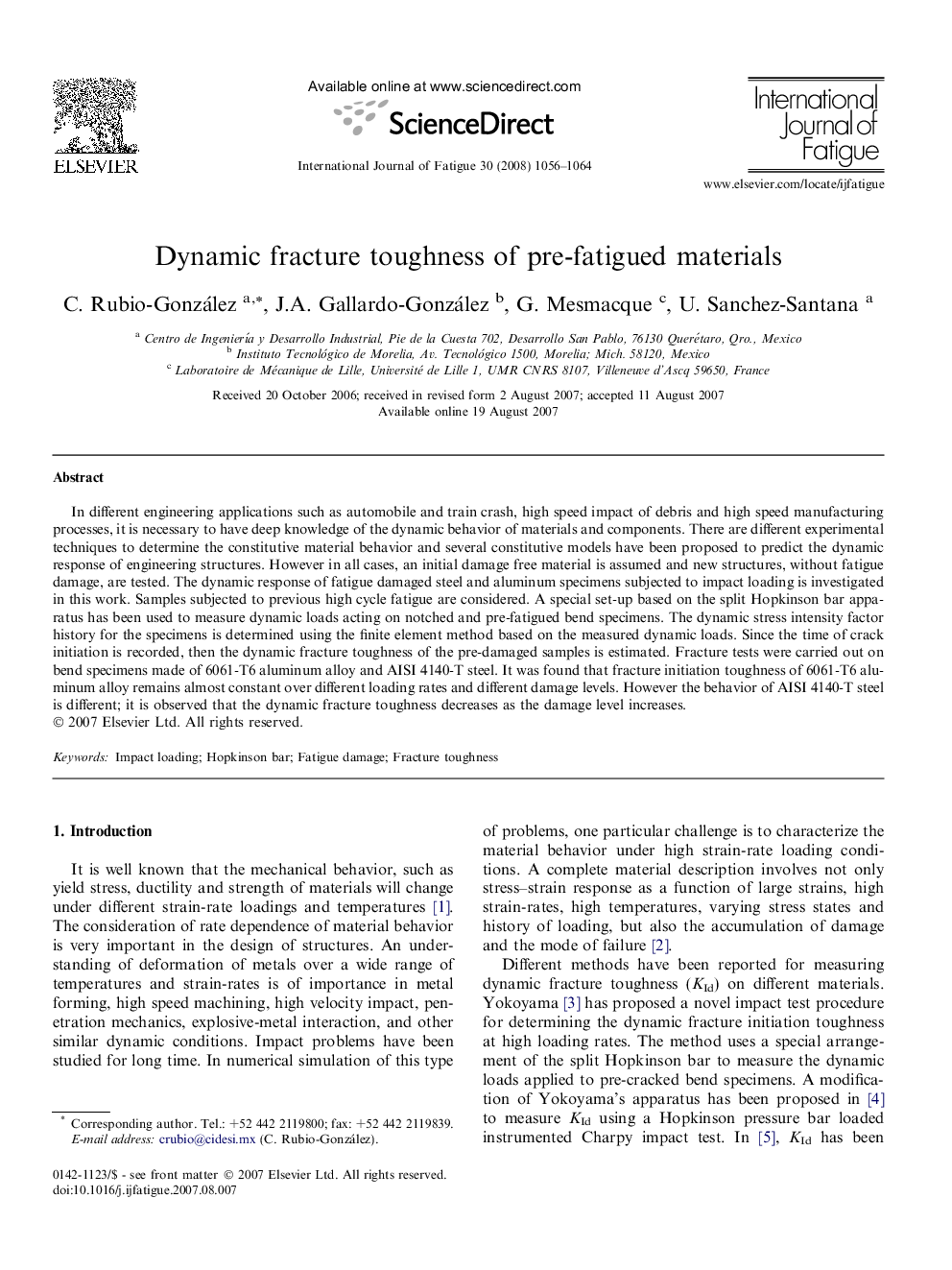| Article ID | Journal | Published Year | Pages | File Type |
|---|---|---|---|---|
| 777149 | International Journal of Fatigue | 2008 | 9 Pages |
In different engineering applications such as automobile and train crash, high speed impact of debris and high speed manufacturing processes, it is necessary to have deep knowledge of the dynamic behavior of materials and components. There are different experimental techniques to determine the constitutive material behavior and several constitutive models have been proposed to predict the dynamic response of engineering structures. However in all cases, an initial damage free material is assumed and new structures, without fatigue damage, are tested. The dynamic response of fatigue damaged steel and aluminum specimens subjected to impact loading is investigated in this work. Samples subjected to previous high cycle fatigue are considered. A special set-up based on the split Hopkinson bar apparatus has been used to measure dynamic loads acting on notched and pre-fatigued bend specimens. The dynamic stress intensity factor history for the specimens is determined using the finite element method based on the measured dynamic loads. Since the time of crack initiation is recorded, then the dynamic fracture toughness of the pre-damaged samples is estimated. Fracture tests were carried out on bend specimens made of 6061-T6 aluminum alloy and AISI 4140-T steel. It was found that fracture initiation toughness of 6061-T6 aluminum alloy remains almost constant over different loading rates and different damage levels. However the behavior of AISI 4140-T steel is different; it is observed that the dynamic fracture toughness decreases as the damage level increases.
